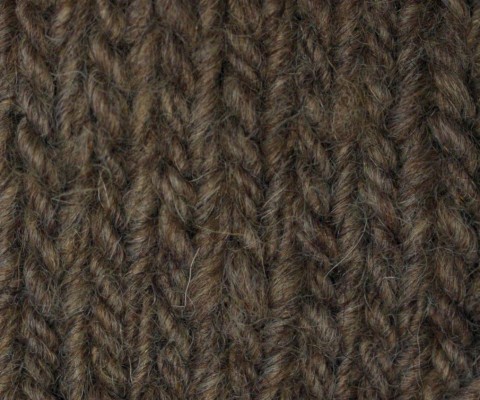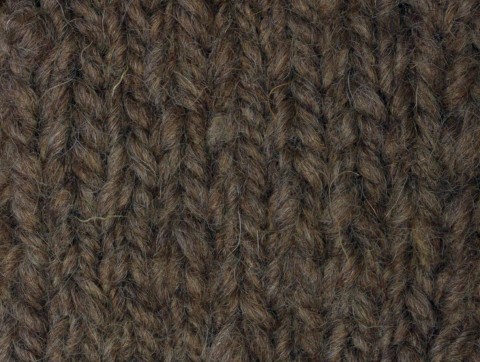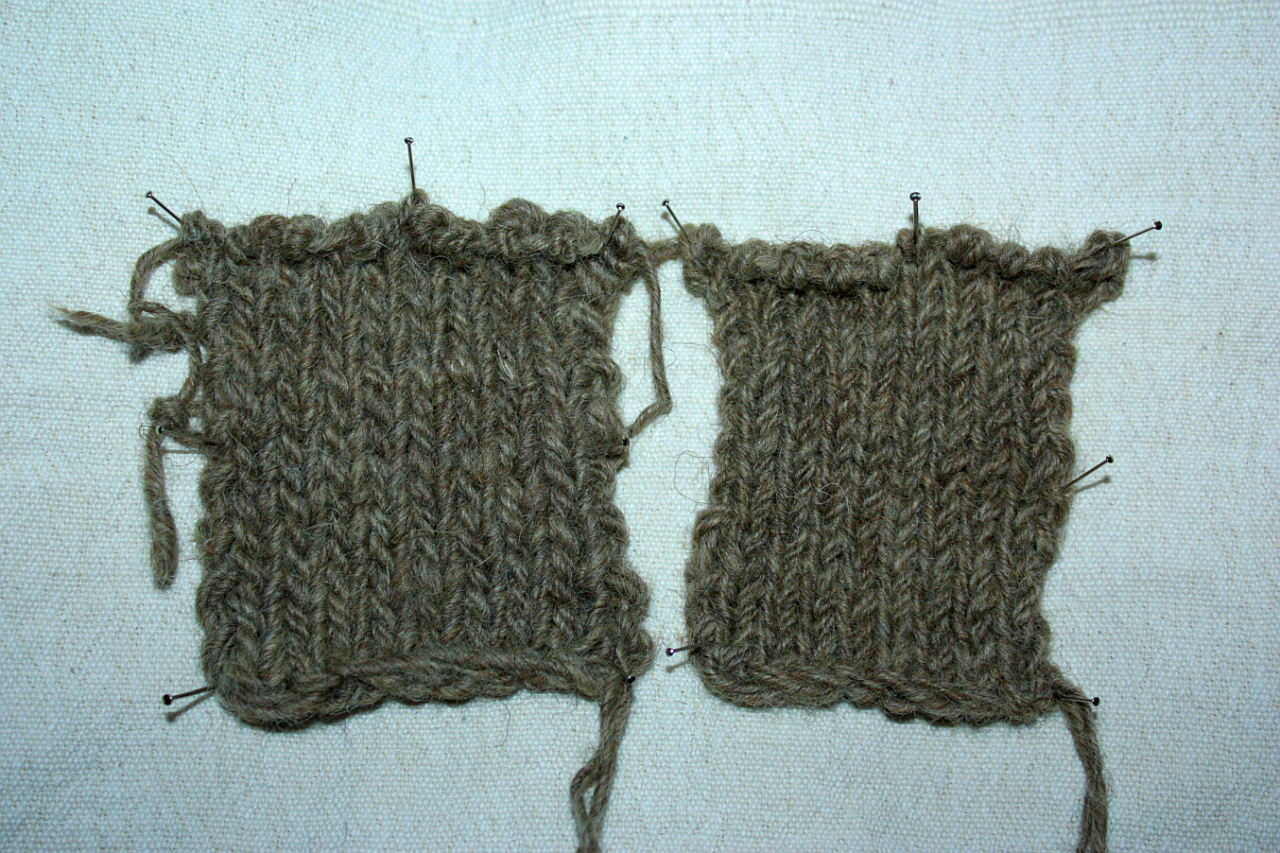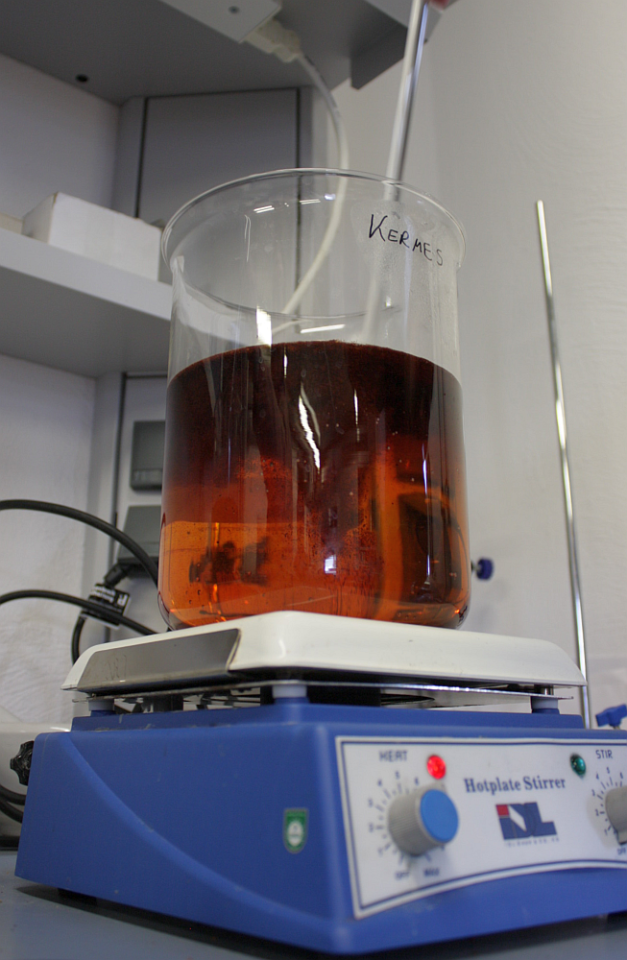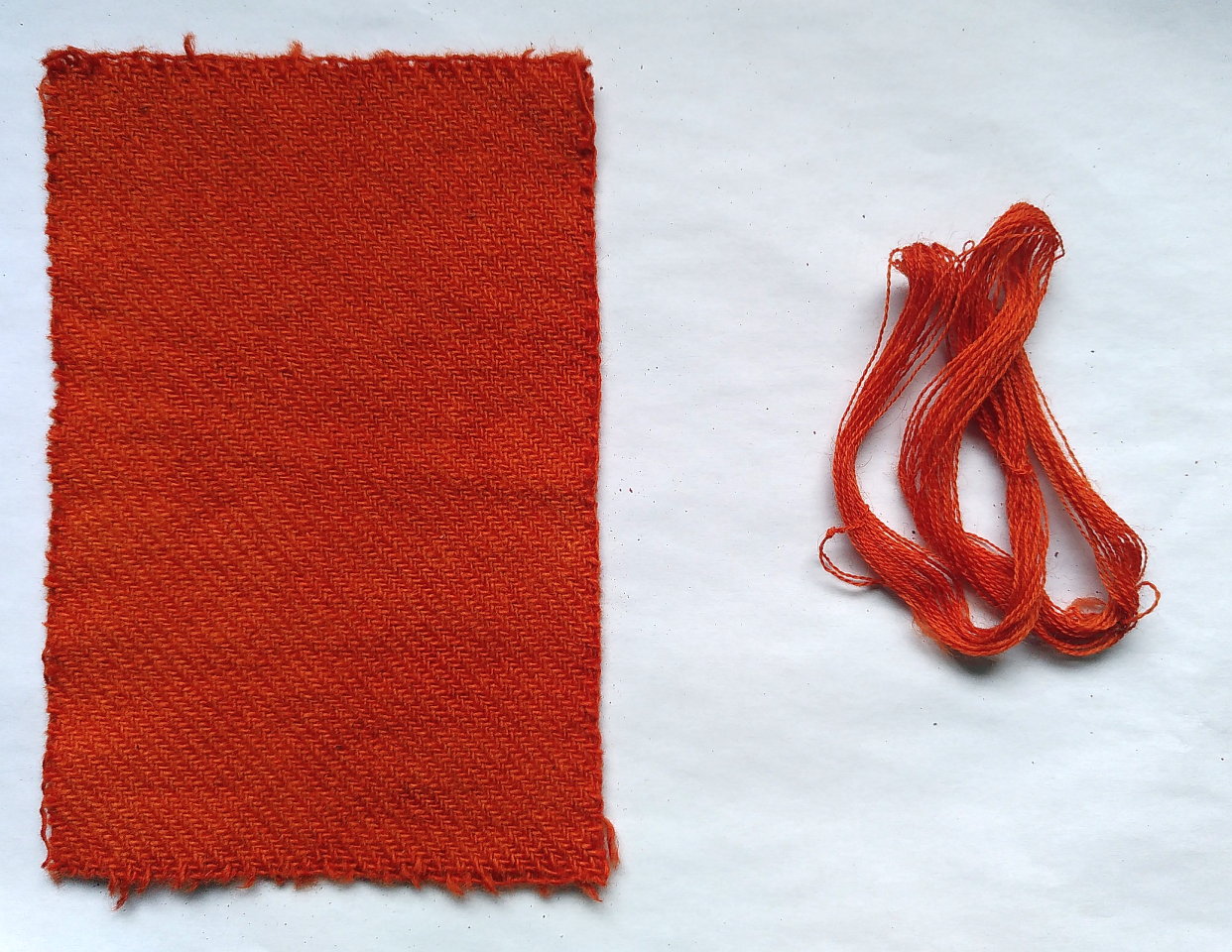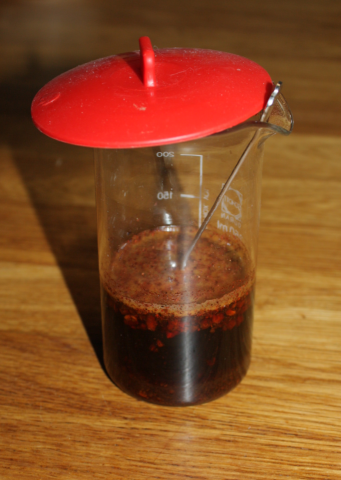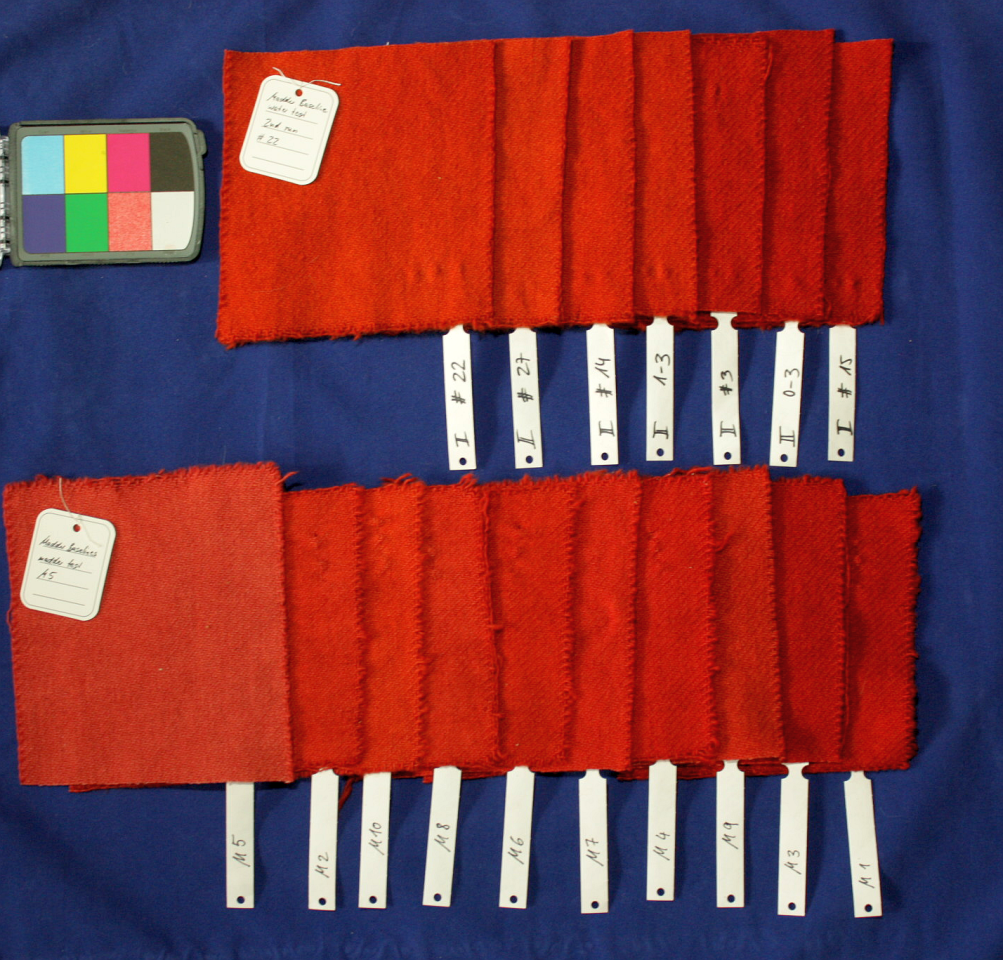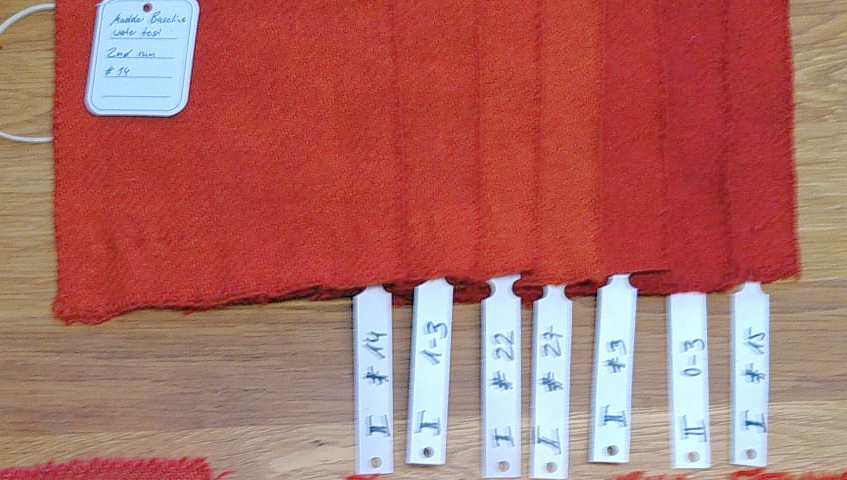When you're working with colours, definitions or descriptions of them are always an issue. Green as grass, blue as the sky, dark as the night - even these descriptions, time-honoured and always nice, include a large variety of shades.
It would be nice to have a good, solid way of describing colours, wouldn't it? Well. There's electronic colour checkers, there's colour space charts, and then... there's human beings.
One of the little side shenanigans we did at the Forum was test how well a colour checker fan works. These are printed colours with a defined number according to a system - you might be familiar with the RGB system, or have heard of CMYK. There's a number of other systems as well, but in this case, that's only relevant insofar as the number you'll write down as your colour name will change.
We asked people to sit down and try to describe the colours of some of our madder sample dyeings with help of the fan. (Thank you to everyone who did!) Everyone who I asked about how it went agreed on it being difficult, as the printed colour patches were not really matching the actual textile colours.
Well. Having had quite the experience with how dissimilar measurements done on the spinning angle were if taken by different persons, I was a bit suspicious from the start on how well the colour fan might work (or not). It would be really, really nice if it did, making the description of colours easier, and more reliable, and hope springs eternal.
This is what we had as one set of samples:
It's a rather bad picture, but hopefully you can see that there's a little difference between some of the samples. Make up your own mind on how many groups you'd see regarding darkness/colour depth - myself, I see three in the originals and four in this (bad) picture, with the one to four pieces in the group having no discernable difference.
Here's the clincher: The cloth patches were not sorted by darkness when participants were doing the colour checking and matching. And... as a result, we had the same colour number assigned to the darkest shade and the lightest shade by different people.
Which, to me, means that this simple method is, unfortunately, out - and that you should not trust the colour numbers given by "comparison-by-eye" using a colour fan tool.
Sigh. It would have been so nice, wouldn't it?




